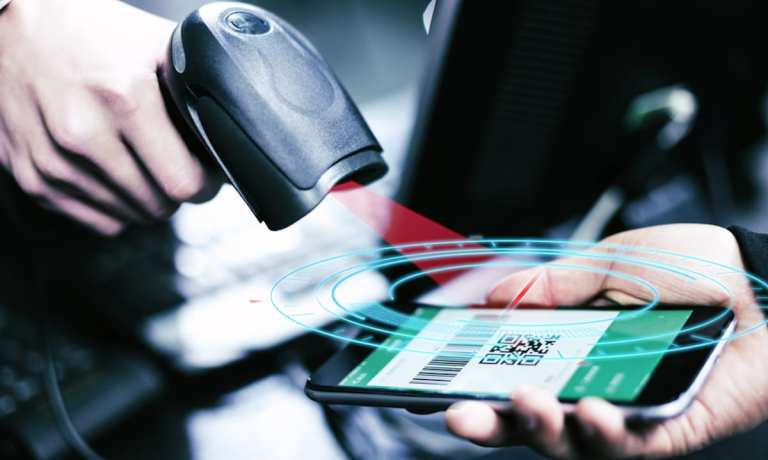They were futuristic at first, then faded into obscurity for years. Suddenly, they’re everywhere. In what is surely one of the greatest COVID-19 underdog success stories, humble QR codes are the touchless payment “innovation” that’s going wide and keeping business moving, sans hands.
PYMNTS’ February 2021 QR Code Payments Tracker®, done in collaboration with Citcon, is an intriguing examination of QR code commerce and its outlook, especially in verticals where QR took hold early in the pandemic with positive results, like the diverse dining sector.
“Restaurants around the globe have scrambled to provide on-premises service while minimizing health risks for customers and employees alike, and QR codes are proving to be invaluable tools. Solutions that leverage the technology allow patrons to view menus and pay for their meals with minimal staff interaction, reducing the risk of viral transmission and allowing eateries to stay in business. A September survey found that 38 percent of U.S. and United Kingdom consumers had scanned a QR code at a restaurant, bar or cafe within the past six months, revealing that the technology is making rapid gains in the sector,” per the Tracker.
Ubiquity appears in reach for QR codes, and not just in the food space. The new QR Code Payments Tracker® lays it all out by highlighting news, real innovation and usable use cases.
Learning From China’s QR Code Culture
In some places, namely China, QR codes were already widespread when COVID hit. That has made the Chinese market a colossal case study in the flexibility and seamlessness of this tech.
Advertisement: Scroll to Continue
“A recent survey found that 74 percent of Chinese consumers make mobile payments daily, and QR codes are leveraged for a staggering 95 percent of these transactions. This figure is also increasing, with the total number of mobile payment users growing by 4 percent over the past year,” the QR Code Payments Tracker® states, adding that “QR codes’ booming popularity in China and elsewhere is expected to fuel the technology’s adoption worldwide during the next several years. A recent study found that at least two billion individuals around the globe are expected to leverage QR codes for payments by 2025, up from 1.5 billion last year. The total annual value of these payments is expected to exceed $2.7 trillion in 2025.”
Still, there’s plenty of room to grow, per the Tracker.
“QR code-based contactless payments are highly popular in China, but they have yet to reach the same level of ubiquity in some other countries. One recent study found that just 12 percent of Australia’s consumers used QR code-based payments on a regular basis, whereas 43 percent used digital wallets and 46 percent used credit cards via mobile browsers,” it states.
SMBs Adopting QR As Applications Abound
Many businesses future-proofing in the wake of COVID travails are turning to QR codes. If we learned nothing, it’s that preparedness equals resilience — and that the resilient will thrive. This is true from the nation’s largest quick-service restaurant chains to the local C-store.
As the February QR Code Payments Tracker® notes, the scannable comeback comes “as customers flock to transaction methods that minimize physical contact, and one study of small to mid-sized businesses (SMBs) suggests this payment trend is likely to outlast the pandemic. It found that the share of SMBs deploying contactless payments increased from 20 percent in June 2020 to 39 percent by December. Seventy-four percent of SMBs said their customers would continue seeking such payments even after vaccines had been widely distributed.”
With decision time at hand, companies that can benefit from touchless QR code technology and its many new use cases need to move swiftly to get POS upgrades done for 2021. The U.S. base is expected to grow 250 percent by 2025, and elsewhere adoption is more robust still.
“Singapore is even instituting national payment standards for QR codes, for example, and the city-state’s national scheme is expected to account for 22 percent of its QR code-based payments by 2025, compared to just 8 percent last year,” according to the new Tracker.




